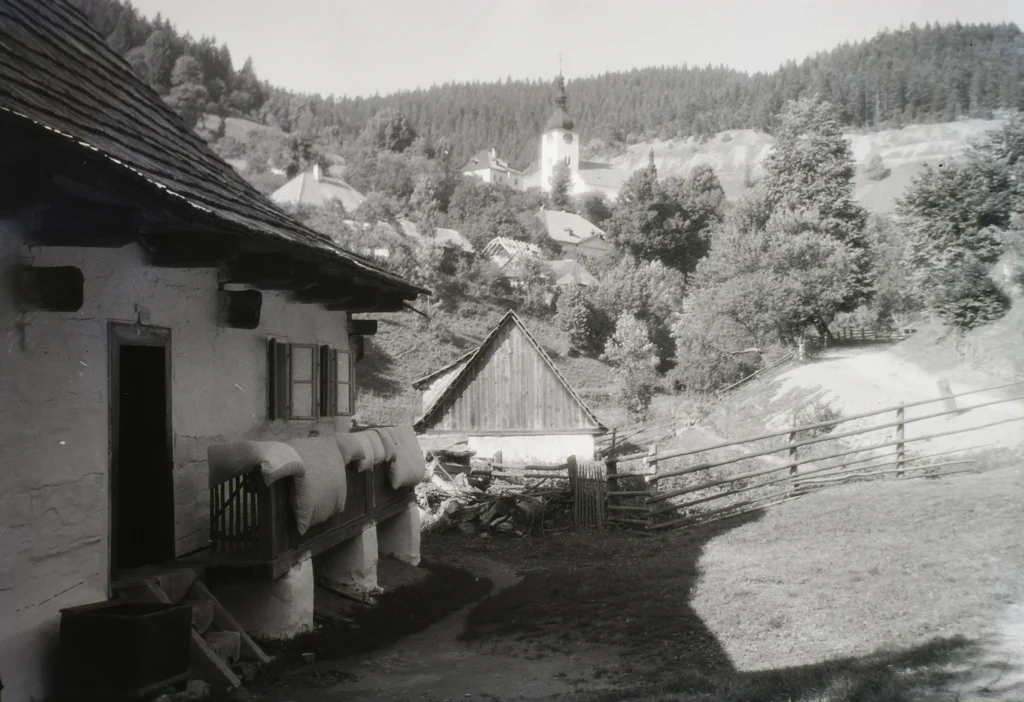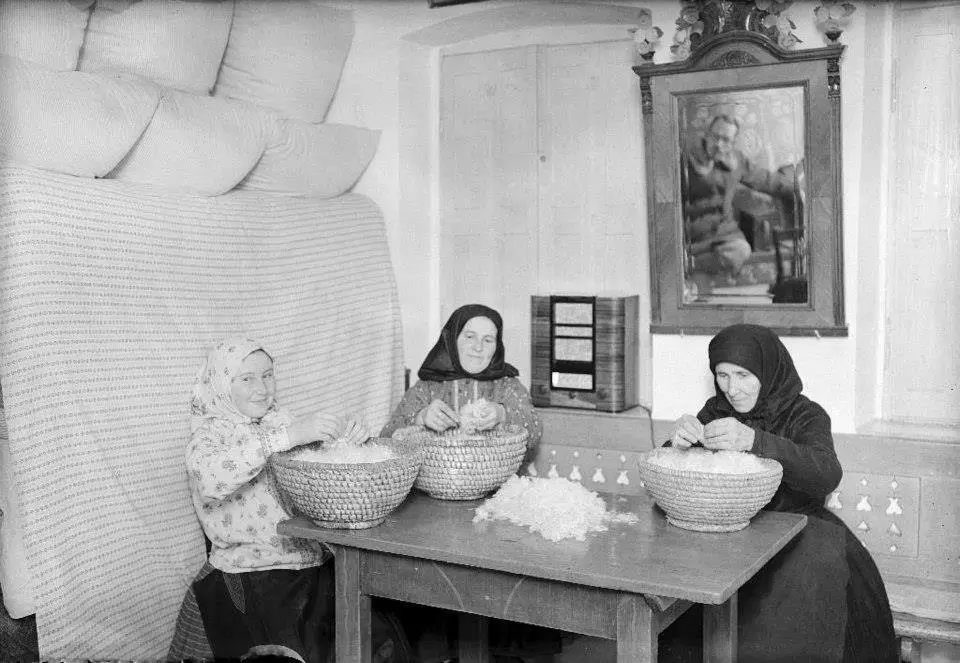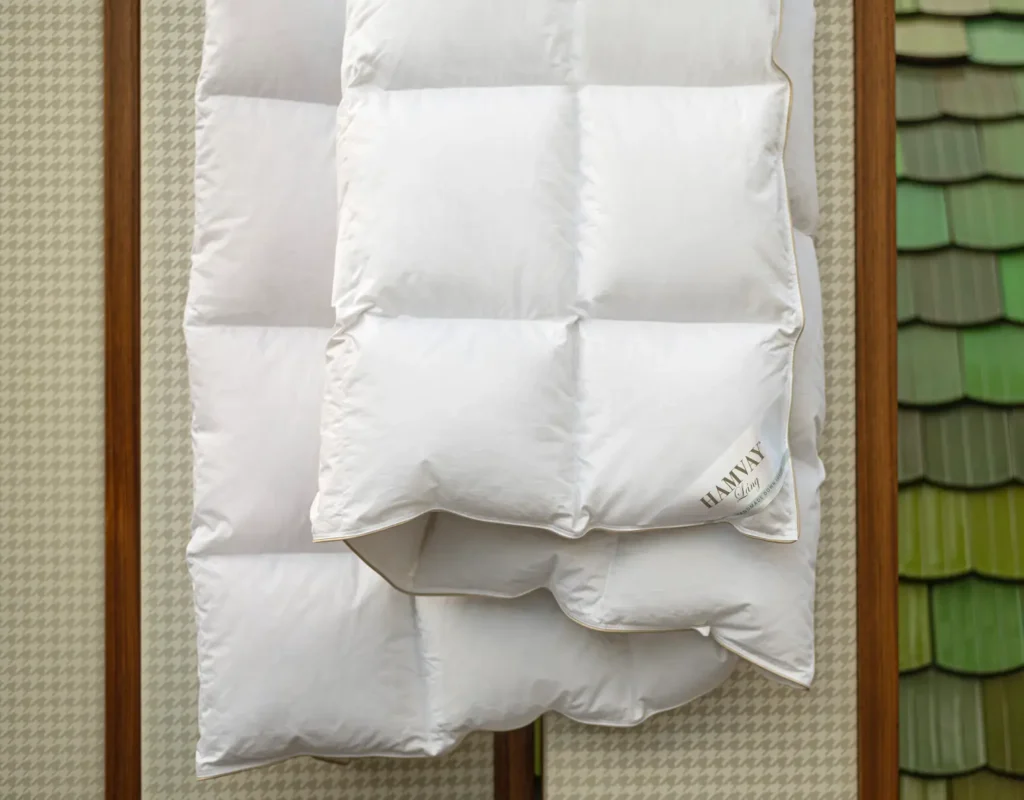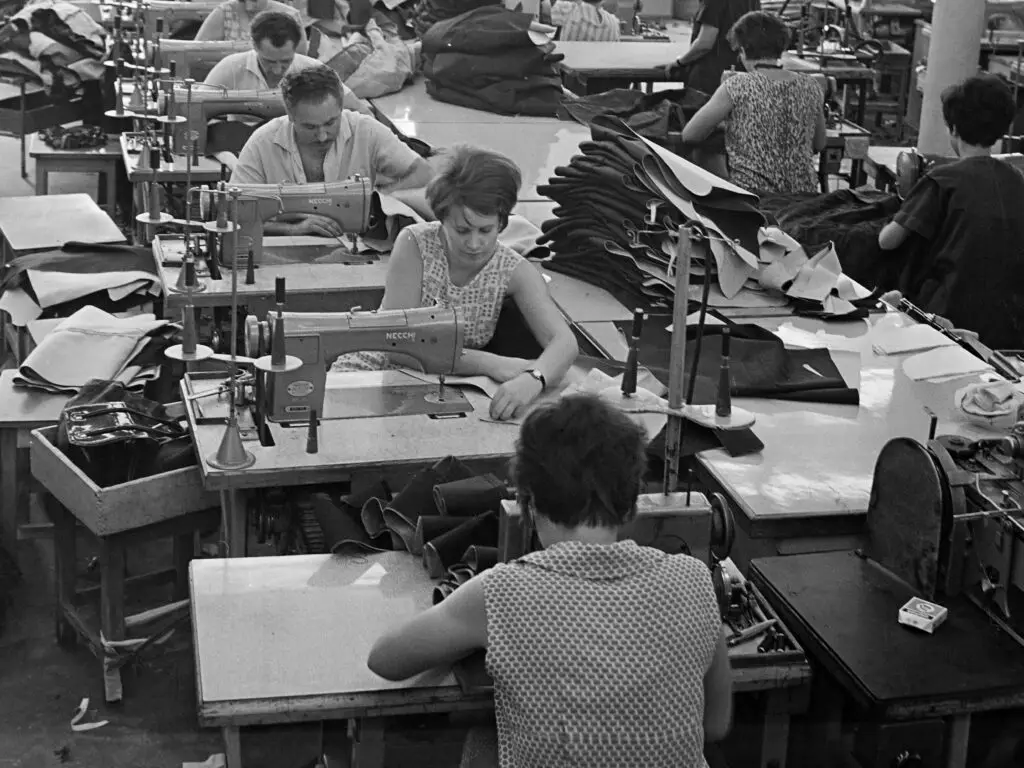The Craft of Down Bedding
A Hungarian profession through time
The Essence of the Profession in Hungary
In Hungary, down bedding is not just a product — it is a profession shaped by centuries of practice and the unique conditions of the Carpathian Basin. The tradition grew out of the country’s deep-rooted
goose farming culture, where Hungarian geese were prized for producing some of the world’s finest down. Over time, the making of down bedding became more than a household duty. It evolved into a recognized craft that combined material knowledge, textile skill, and a sense of artistry. At its heart, the profession is about transforming fragile, weightless clusters of goose down into duvets and pillows that endure for decades.

From Household Task to Recognized Craft
The profession’s foundations lie in domestic life. In rural households, winter evenings were often devoted to preparing down. Families and neighbors gathered for tollfosztás — the careful plucking and sorting of goose feathers. Women, in particular, became experts at recognizing the finest down clusters by touch, distinguishing them from coarser feathers with a sensitivity passed from mother to daughter. What began as a communal household task gradually grew into an acknowledged skill. Some women became sought-after for their ability to sort down or sew particularly fine duvets, while traders and artisans gave the craft visibility beyond the home. What had once been necessity began to carry the weight of profession.

Craft and Knowledge in Hungary
At the center of the Hungarian down bedding profession is knowledge — knowledge of materials, of touch, of balance. Down had to be washed, dried, and stored with precision to ensure purity and longevity. Sorting required a delicate hand, while stitching demanded accuracy and patience. It was not enough to simply fill a bag with feathers. A true craftsman — or craftswoman — knew how to create a duvet where the filling remained evenly distributed, or a pillow that offered both softness and support.
The profession in Hungary also carried distinct roles. Women traditionally handled the intimate work of plucking, cleaning, sorting, and sewing, while men often took responsibility for the trade and sale of bedding. Knowledge flowed through families, creating a living chain of expertise. The profession was never formally taught in schools; it was learned in kitchens, in workshops, in the rhythm of daily life.

The Art of Construction
The construction of down bedding in Hungary has always been an art in itself. The cover material, usually fine cotton, had to be woven tightly enough to hold the down but lightly enough to remain breathable. Duvets were divided into chambers — known as baffles — to ensure the filling stayed evenly spread. Pillows required careful design: a chambered interior for support, or single fill for softness.
Sewing was meticulous, and filling demanded the right balance of weight and loft. Every step was guided by a simple but demanding principle: the final piece should last for decades, providing comfort without compromise.

The 20th Century: Factories and Turning Points
The 20th century brought change to the profession. Some family workshops remained true to their traditional scale, while others expanded into larger workshops and eventually into factories. Sewing machines and mechanized washing systems became part of the process, allowing production on a greater scale. Yet even as the industry modernized, the essential core of the profession remained human expertise. Machines could clean or stitch, but they could not replace the instinctive judgment of trained hands.
This balance between handcraft and industrial method became a defining feature of the Hungarian profession. Whether in a small family workshop or in a larger factory, skilled workers ensured that down was properly sorted, filled, and finished. The craft adapted to new conditions, but the knowledge at its heart remained unchanged.

Hungarian Down Bedding Craft in the Modern World

